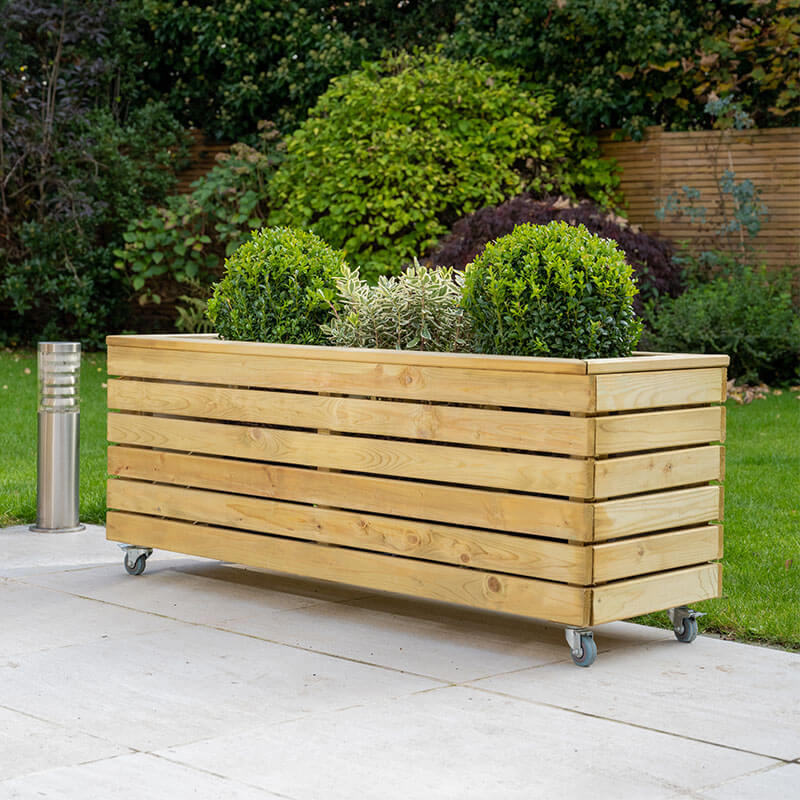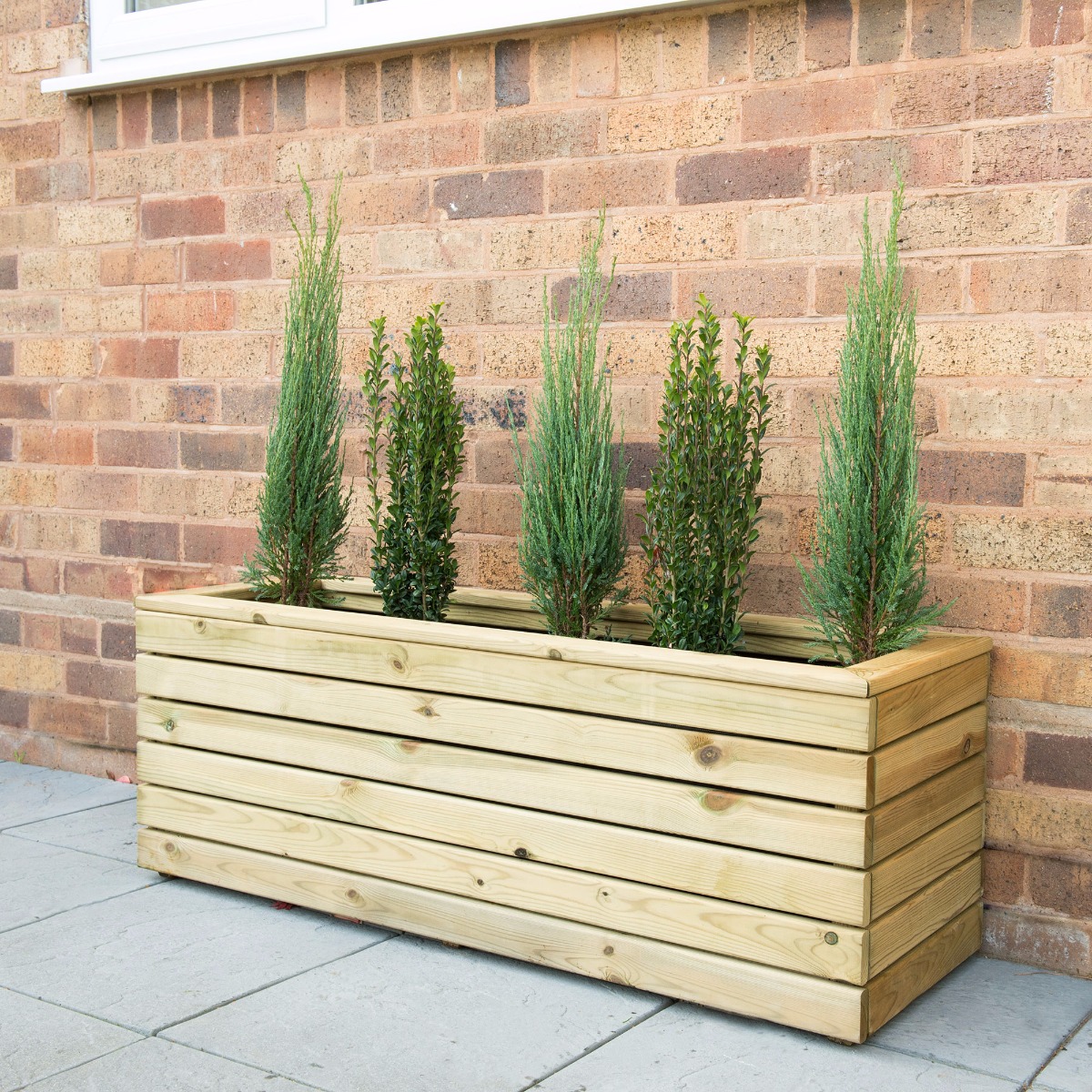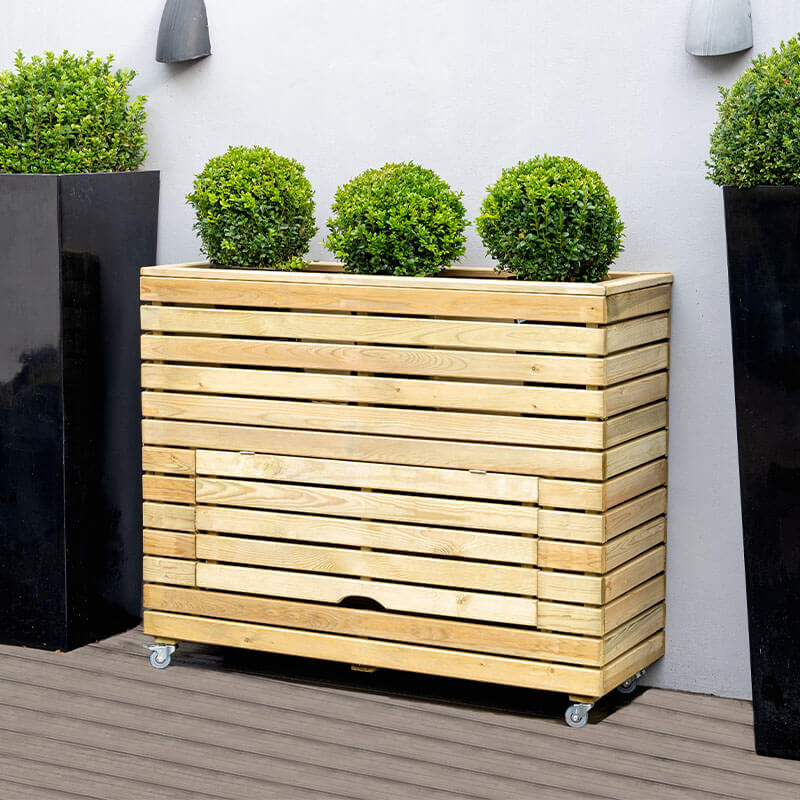Planting
Showing 17–24 of 41 resultsSorted by popularity
-
Forest Linear Square Wooden Garden Planter 1’x1′ (0.4×0.4m) £67.99 Buy product

-
3’11 x 1’4 Forest Linear Long Wooden Garden Planter with Wheels (1.2m x 0.4m) £143.99 Buy product

-
Forest Linear Long Wooden Garden Planter 4’x1′ (1.2×0.4m) £111.99 Buy product

-
3’11 x 1’4 Forest Linear Tall Wooden Garden Planter with Storage and Wheels (1.2m x 0.4m) £224.99 Buy product

-
3’11 x 1’4 Forest Linear Tall Wooden Garden Planter with Storage (1.2m x 0.4m) £224.99 Buy product

-
Forest Kitchen Garden Planter 3’3 x 2′ (1m x 0.7m) £89.99 Buy product

-
Forest Large Kitchen Garden Planter 6′ x 2′ (1.8m x 0.7m) £124.99 Buy product

-
Forest Grow Bag Planter 3’9″ x 1’10 (1.15m x 0.55m) £86.99 Buy product

Planting is an art form that transforms spaces, bringing life and tranquillity to any garden. Discover the diversity of planting options, from vibrant blooms to sturdy shrubs, and learn how to choose the perfect plants for your landscape.
The Canvas of Nature: Diverse Plant Types
The world of planting is vast and varied, offering a multitude of options to suit any gardener’s vision. From perennials that return year after year, to annuals that provide a burst of colour for a single season, the choices are endless. Biennials offer a unique growth cycle, producing foliage in the first year and flowering in the second.
Shapes and Structures: Tailoring Your Garden’s Design
Plants come in a multitude of shapes and structures, each contributing to the overall aesthetic of your garden. Consider climbers for vertical interest, groundcovers to create lush carpets, and shrubs for architectural elements. Each form serves a unique purpose, allowing you to create a dynamic and engaging landscape.
Benefits of Biodiversity: The Advantages of Varied Planting
Diverse planting not only enhances the beauty of your garden but also promotes ecological health. A mix of plant species encourages a balanced ecosystem, attracting beneficial insects and providing habitats for wildlife. This biodiversity can lead to healthier plants and a more resilient garden.
Evergreen vs Deciduous: Understanding the Differences
When planning your garden, consider the differences between evergreen and deciduous plants. Evergreens provide consistent structure and colour throughout the year, while deciduous plants offer seasonal transformation, shedding their leaves in autumn and often providing vibrant displays in spring and summer.
Choosing the Right Plants: Tips for Success
Selecting the right plants for your garden involves considering factors such as climate, soil type, and available sunlight. Researching plant hardiness zones and understanding the specific needs of each species will help ensure your garden thrives. Group plants with similar requirements together to simplify care and maintain plant health.
Companion Planting: Synergy in the Garden
Companion planting involves strategically placing plants that benefit each other when grown together. For example, pairing marigolds with tomatoes can help deter pests, while basil enhances the growth of peppers. This method not only improves plant health but also maximises space and yield.
Native Plants: Embracing Local Flora
Incorporating native plants into your garden supports local ecosystems and reduces maintenance efforts. Native species are adapted to the local climate and soil conditions, making them more resilient to pests and requiring less water and fertiliser. They also provide essential resources for native wildlife.
Edible Planting: A Feast for the Senses
Edible planting adds a functional dimension to your garden, offering the joy of homegrown produce. Consider planting a variety of herbs, vegetables, and fruit trees to enjoy fresh flavours and nutritional benefits. Edible gardens can be both beautiful and productive, enhancing your culinary experiences.
Pollinator-Friendly Planting: Supporting Vital Species
Creating a pollinator-friendly garden involves selecting plants that provide nectar and pollen for bees, butterflies, and other pollinators. Choose native wildflowers, lavender, and sunflowers to attract these vital creatures, supporting biodiversity and enhancing plant reproduction.
Seasonal Planting: Embracing the Cycles of Nature
Seasonal planting allows you to enjoy a garden that evolves throughout the year. By selecting plants that bloom at different times, you can create a continuous display of colour and interest. Consider spring bulbs, summer perennials, autumn foliage, and winter evergreens for year-round beauty.
Container Planting: Flexibility and Versatility
Container planting offers flexibility, allowing you to create portable gardens that can be moved to suit changing light conditions or personal preferences. This method is ideal for small spaces, providing the opportunity to experiment with different plant combinations and styles. Use a variety of pots, planters, and hanging baskets to add layers and depth to your garden.
Sustainable Planting: Eco-Friendly Choices
Adopting sustainable planting practices helps conserve resources and reduce environmental impact. Choose drought-tolerant plants, implement water-saving irrigation systems, and use organic fertilisers to create an eco-friendly garden. These practices not only benefit the environment but also reduce maintenance costs and efforts.
Revitalise Your Space: Rewilding and Naturalistic Planting
Rewilding and naturalistic planting embrace the beauty of untamed landscapes, encouraging a more informal garden style. This approach prioritises native species, biodiversity, and habitat creation, transforming traditional gardens into vibrant, self-sustaining ecosystems.
Explore the world of planting and discover how thoughtful choices and creative designs can transform your garden into a haven of beauty and biodiversity. Whether you’re drawn to the structured elegance of formal gardens or the wild charm of naturalistic landscapes, the possibilities are endless with the right plants and a touch of imagination.




